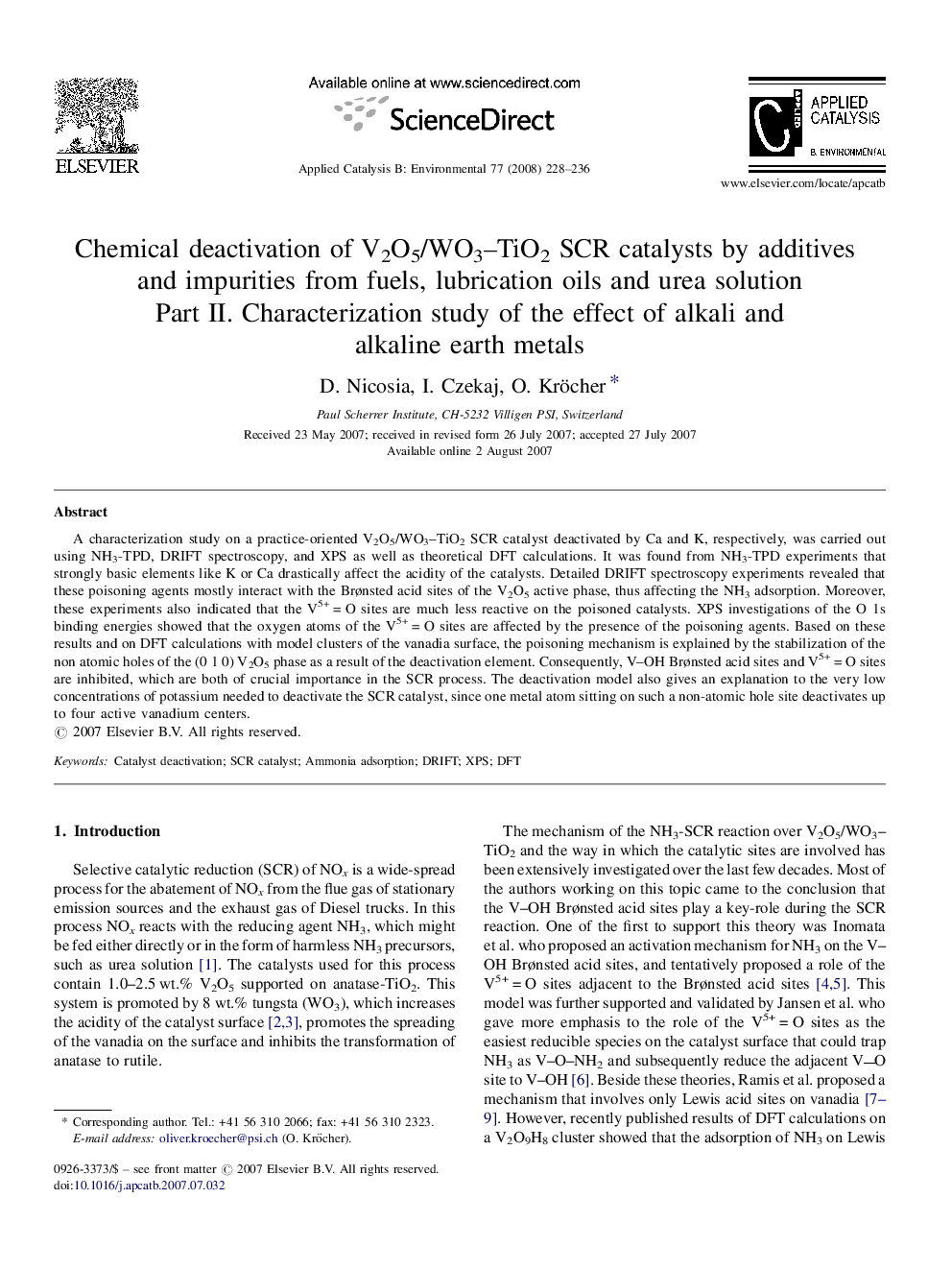| Article ID | Journal | Published Year | Pages | File Type |
|---|---|---|---|---|
| 48389 | Applied Catalysis B: Environmental | 2008 | 9 Pages |
A characterization study on a practice-oriented V2O5/WO3–TiO2 SCR catalyst deactivated by Ca and K, respectively, was carried out using NH3-TPD, DRIFT spectroscopy, and XPS as well as theoretical DFT calculations. It was found from NH3-TPD experiments that strongly basic elements like K or Ca drastically affect the acidity of the catalysts. Detailed DRIFT spectroscopy experiments revealed that these poisoning agents mostly interact with the Brønsted acid sites of the V2O5 active phase, thus affecting the NH3 adsorption. Moreover, these experiments also indicated that the V5+ = O sites are much less reactive on the poisoned catalysts. XPS investigations of the O 1s binding energies showed that the oxygen atoms of the V5+ = O sites are affected by the presence of the poisoning agents. Based on these results and on DFT calculations with model clusters of the vanadia surface, the poisoning mechanism is explained by the stabilization of the non atomic holes of the (0 1 0) V2O5 phase as a result of the deactivation element. Consequently, V–OH Brønsted acid sites and V5+ = O sites are inhibited, which are both of crucial importance in the SCR process. The deactivation model also gives an explanation to the very low concentrations of potassium needed to deactivate the SCR catalyst, since one metal atom sitting on such a non-atomic hole site deactivates up to four active vanadium centers.
